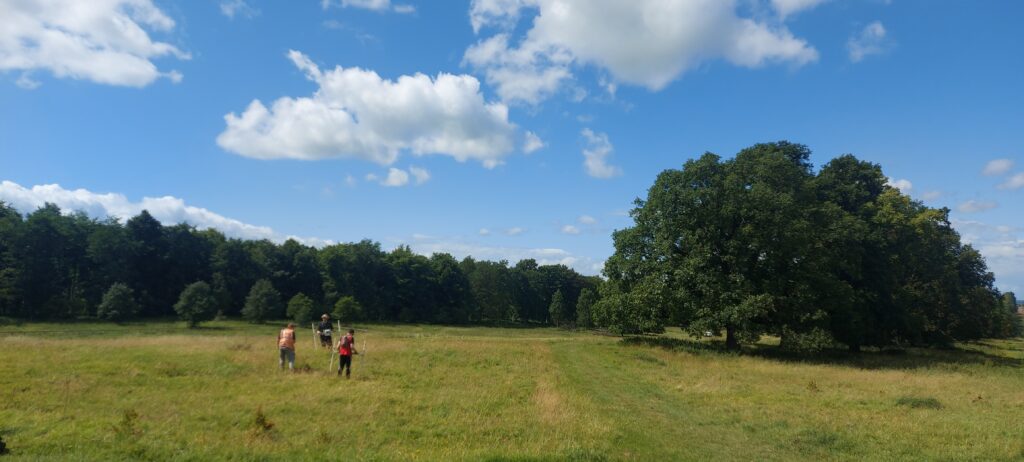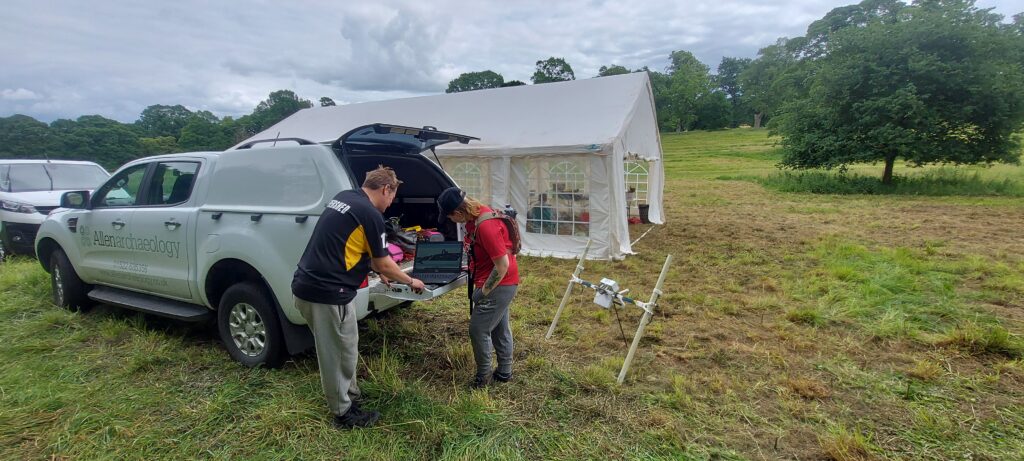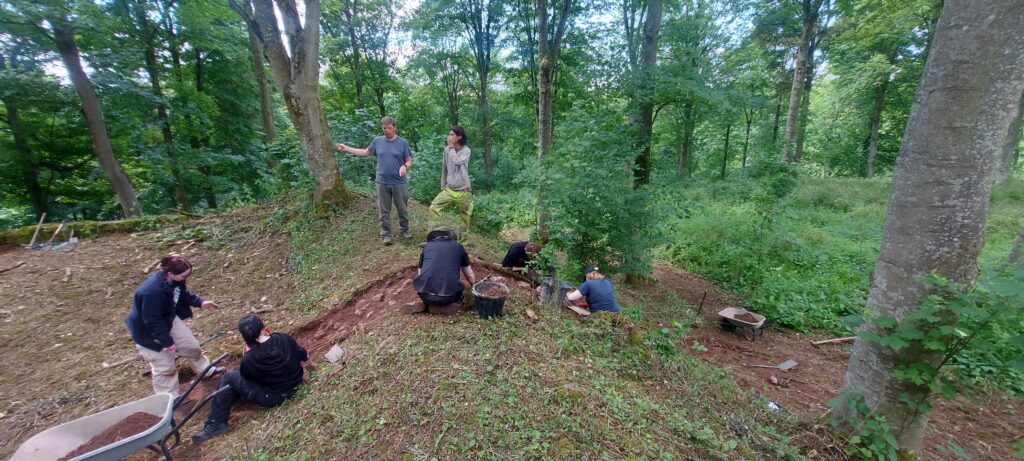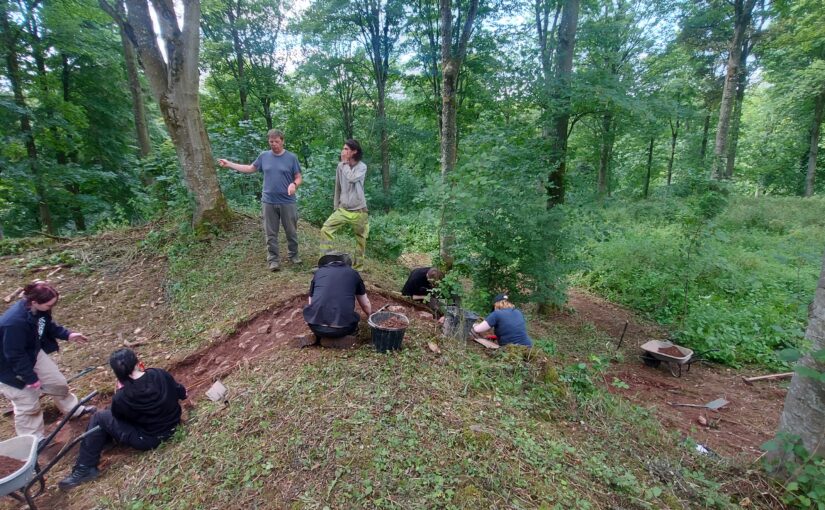At the end of the first week of four, project lead Sophie Ambler gives an update of what has been going on the excavation.
As we draw to the end of our first week of the Lowther Medieval Castle and Village project, the team has made excellent progress.
Before the archaeologists arrived, the ground staff at Lowther Castle prepared the site – a big task, with the mowing of large areas of the north park. In recent years, the Lowther team has been rewilding the estate, allowing the grass and wildflowers to grow as a haven for wildlife. This meant we needed to balance the demands of the project – ensuring ready access for geophysical surveying – with the requirement to preserve this rich habitat as far as possible.
Subscribe to our quarterly newsletter
The LiDAR and earthworks survey (discussed in our first post) allowed us to identify the principal north-south run of the medieval village along the eastern half of the site, together with the road or routeway connecting it to the medieval castle. This was the area we really wanted to survey and which had to be mowed. Meanwhile, a long strip running down the western side of the site, where we expected little medieval habitation, was left unmown. Walking across the site to the church yesterday, I was greeted by a kaleidoscope of butterflies cavorting in this long grass, and was glad we’d made this compromise!

The geophysical survey is now largely complete. It has been led by Rob Evershed, a geophysical expert from Allen Archaeology, with the help of the project’s student archaeologists from UCLan. Rob first staked out thirty-metre grids, before training the students in the patient and disciplined task of geophysical surveying. As I learned this week, this means dressing ready for the task (no metal can be worn at all – including metal clasps and buttons – as it can interfere with the results) and carrying the equipment at a slow and steady pace across the grids.

The results are still coming in, but have already been hugely helpful. Rob was able to plot services running close to the castle (and thus where we shouldn’t be digging) and spot a target for trench three: what looks like a square ditch, potentially associated with one of the dwellings built along the east-west routeway linking the castle to the main north-south run of the village. As I left on Thursday afternoon, the team was busy opening Trench Three, incorporating the routeway and this anomaly, in the hopes of identifying features and finding dating evidence.
Meanwhile, on Monday the team had opened Trench One and Two at the castle earthwork. It wasn’t possible to use geophysics in this area, because the earthwork stands in woodland and the root systems would create too much disturbance for any results to be meaningful. The earthwork had been heavily overgrown but again, in advance of the project, the Lowther team cleared all the long grass and nettles across and around the earthwork.

This not only allowed the archaeologists easy access but also revealed the earthwork in all its glory. I was struck afresh with its scale, particularly its height, and its shape and features are now far easier to discern. The earthwork is roughly square, with an entranceway on the eastern side (presumably accessed from the east-west routeway from the village). At the south-west corner a significant continuation of the bank protrudes to form a platform. The great bank of a ringwork castle would likely have been surmounted by a timber palisade, and we’re speculating that this platform may have been home to a wooden tower, sited to give wide-ranging views north, east and south. Meanwhile, the western length of the castle was protected by a steep slope running down to the River Lowther.
Subscribe to our quarterly newsletter
The two trenches were sited on the north and western sides of the earthwork. Under the guidance of Jonny Milton of Allen Archaeology and Jim Morris of UCLan, the student archaeologists removed the turf and set about digging. The northern trench runs from the castle interior, cutting through the bank and down along the bank’s steep northern slope. We hope this will allow us to see how the bank was constructed and provide dating evidence. There is still a long way to go, but already the trench has yielded a fragment of roughly made pottery, which will be analysed to see if it is early medieval. Over week two, the archaeologists will continue working their way down through the trench, stepping it out to take account of the steep slope.
Meanwhile, the western trench yielded some curious results: a couple of trays’ worth of Victorian detritus, a stone wall, and a floor surface nicely laid with hand-made bricks: evidence that part of the castle interior was taken over and used for purposes that are so far unclear. The team aims to investigate this phase further and, after thoroughly recording these features, to dig further down in the hope that they’ve preserved features from the medieval phase.
Subscribe to our quarterly newsletter
There’ll be more entries in our Dig Diary to follow, and meanwhile you can follow the project’s progress on Twitter via the hashtag #LowtherMedievalCastle.
